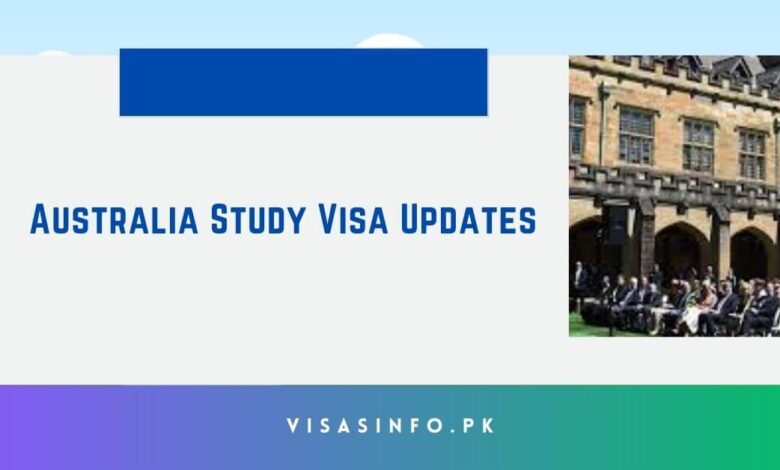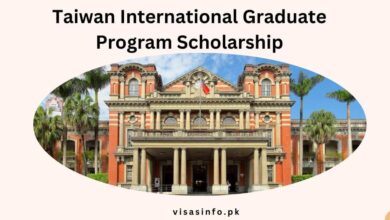Australia Study Visa 2024 – Latest Updates

Preparing for the subsequent index by navigating the potential and pitfalls of student visa processing. A significant number of students aspire to embark on an academic journey abroad, and the application process for a student visa is one of the most critical stages in realizing this dream.
This comprehensive report will examine the intricacies of student visa processing, with a particular emphasis on the November intake. Additionally, we will investigate the patterns and challenges associated with the upcoming February intake of 2024.
November Intake Analysis
A series of challenges and triumphs have been experienced by students who are pursuing overseas education during the November intake, which spans approximately one and a half months. A substantial number of students have encountered delays in visa processing as a result of a redesigned visa system, which has made the Visa scenario during this period unique.
A unique pattern is evident in the comparisons between the November intake and previous intakes, such as the February and July intakes, in that applicants experienced extended delays in visa approvals.
Visa Delays and Embassy Processes
The new dynamics of visa processing have had a substantial impact on students who are currently awaiting their visas. It has been irritating when visa applications take longer than anticipated, especially for individuals whose documents are still at the embassy. Students who are anticipating the outcome of their visa applications are apprehensive about the extended delay.
These concerns must be addressed, as a significant number of students are anticipating the commencement of their studies without knowledge of their visa status.
Dealing with Visa Delays
When students encounter delays in receiving their visas and unknown outcomes, they must understand the resolution process. If your visa is experiencing delays, there is still hope for your November intake. Visa updates are anticipated in the next few weeks, which will provide solace to those who are eagerly anticipating their results. However, it is pertinent to consider postponing the subsequent intake for those who are still in ambiguity.
Navigating Deferral Scenarios
Students who are concerned that their delayed visa application may impede their ability to begin their November classes should not give up. One viable alternative is to postpone the intake until February. It is crucial to ensure that your dossier is submitted to the embassy on time, that the updating process is initiated, and that it satisfies the standards of the upcoming intake. This increases the likelihood of a more seamless transition and a prompt Visa conclusion.
Strategic Approach for February 2024 Intake
Prospective students are eagerly anticipating the February 2024 intake and are inquisitive about the anticipated Visa Trends. Insightful information is obtained by examining the experiences of the most recent admissions in November and July. The February intake is still promising, despite the low number of visa approvals during recent intakes, as visa quotas are still being met. However, achievement necessitates proactiveness.
Check Also: Australia Student Visa Changes
Early File Submission for February Intake
You must submit your file as soon as possible to increase your likelihood of receiving a visa for the February 2024 intake. It is crucial to complete procedures such as GD, Co, and GST as soon as possible to ensure that your documentation is prepared for submission to the Embassy. Postponing the submission until the final stages of the intake process may lead to a greater number of applications being denied, particularly when the embassy reviews previous submissions.
Benefits of an Australia Study Visa
- Improved Processing Times: Recent updates have been implemented to enhance the processing times for a variety of visas, such as student and visitor visas. This results in reduced wait times for applicants and faster decisions.
- International Student Permit limit: The new rule to limit international student permits can help balance immigration intake and ensure that those who receive study permits have access to quality education and employment opportunities post-study.
- Expanded Eligibility: Certain new visa regulations, including modifications to work permits and LMIA exemptions, establish more expansive eligibility requirements, thereby simplifying the process of employment for foreign nationals in Canada.
- Visitor Visa Flexibility: New visitor visa regulations, such as extended stay periods and more flexible re-entry options, enable visitors to remain in Canada for extended periods without the necessity of submitting additional applications.
- Spouse Open Work Permits: Canada’s recent policies have increased the availability of open work permits for the spouses of visa holders, thereby facilitating easier family reunification and access to the labor market.
- New Immigration Pathways: Canada is consistently introducing and updating new immigration pathways, such as provincial nominee programs (PNPs), which facilitate permanent residency.
Diversifying University Applications
For students who aspire to enhance their likelihood of obtaining a visa, it is prudent to diversify their university applications. This will result in the most favorable results. Applying to multiple universities can significantly increase your likelihood of acceptance, particularly if they are classified as level-one institutions. The higher Visa success rates associated with these types of universities are underscored by the experiences of previous intakes.
Addressing Concerns Regarding Offer Letters and Clearances
Candidates frequently express concern regarding the duration of time it takes for offer letters and university approvals to be received. It is advisable to submit applications to multiple universities simultaneously to alleviate this concern. If GD clearance or Co is pending, it is essential to proactively communicate with the institution through regular follow-up correspondence to expedite the process.
Securing a student visa is a crucial stage in the pursuit of an international academic adventure, which has the potential to be a life-changing experience. A proactive and well-planned approach is essential for navigating the intricacies of the visa processing process.
Regardless of whether you are anticipating the November intake visa or preparing for the February 2024 intake, you can effectively navigate the path to overseas study by making informed decisions and being aware of the trends, issues, and potential solutions outlined in this update.
Frequently Asked Questions:
-
How much money do you require to travel to Australia for a study visa?
Ques: How much money is required for a student visa in Australia? The total amount needed to secure a study visa in Australia is as follows: The application fee is around 710 AUD (38,300 INR) for subclass 500. The funds required to prove a single student is 72,465 AUD (39 lakhs INR).
-
Is an Australian student visa easy?
Australian universities are strong in research, excelling in areas such as arts and humanities, education, and sciences. It is easier to get an Australian student visa than in other countries. Students wanting to study in Australia must meet certain requirements to qualify for a visa.
-
What is the new rule for student visas in Australia?
Holders of a visitor visa in Australia will not be able to apply for a student visa onshore starting July 1, 2024, according to new rules announced today by the Minister for Home Affairs, Hon Claire O’Neil MP. Temporary Graduate Visa holders will also no longer be able to apply for Student Visas online.



